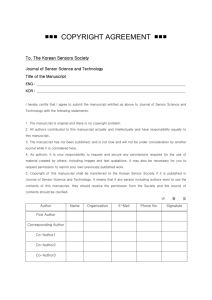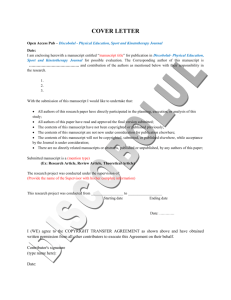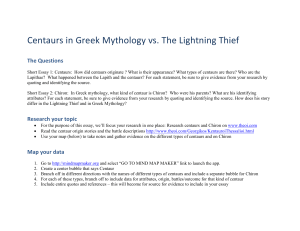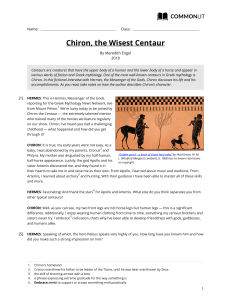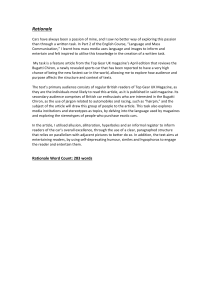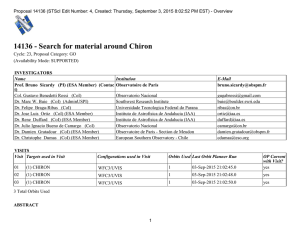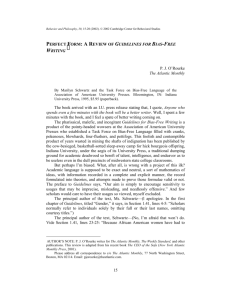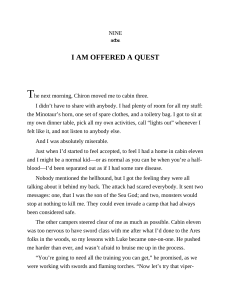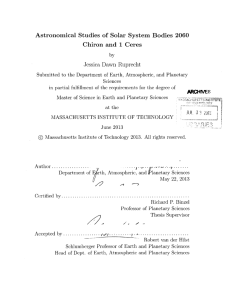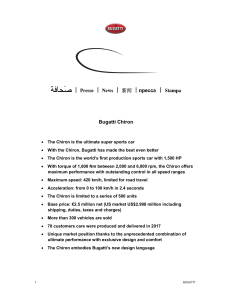CHIRON MANUSCRIPT GUIDELINES 6/2014 Chiron Publications
advertisement
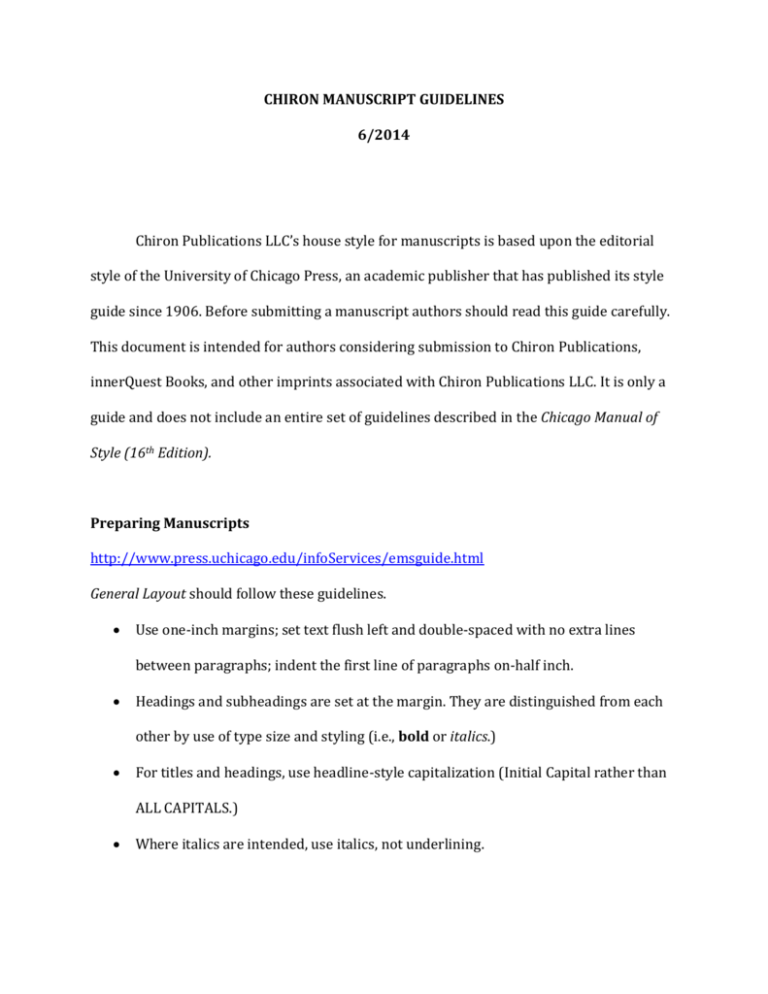
CHIRON MANUSCRIPT GUIDELINES 6/2014 Chiron Publications LLC’s house style for manuscripts is based upon the editorial style of the University of Chicago Press, an academic publisher that has published its style guide since 1906. Before submitting a manuscript authors should read this guide carefully. This document is intended for authors considering submission to Chiron Publications, innerQuest Books, and other imprints associated with Chiron Publications LLC. It is only a guide and does not include an entire set of guidelines described in the Chicago Manual of Style (16th Edition). Preparing Manuscripts http://www.press.uchicago.edu/infoServices/emsguide.html General Layout should follow these guidelines. Use one-inch margins; set text flush left and double-spaced with no extra lines between paragraphs; indent the first line of paragraphs on-half inch. Headings and subheadings are set at the margin. They are distinguished from each other by use of type size and styling (i.e., bold or italics.) For titles and headings, use headline-style capitalization (Initial Capital rather than ALL CAPITALS.) Where italics are intended, use italics, not underlining. Use word-processor functions to indent paragraphs and format lists. Avoid using spaces, tabs, or returns. Turn off automatic hyphenation. Illustrations, Tables, and Charts Illustrations include artwork or any other presentation in images rather text or numbers, such as maps or charts. Tables are complex this presented in columns and rows. Illustrations, charts, maps and other graphical representations are grouped together and referred to as figures. All figures and tables are numbered and referred to in the text by number; figures and tables are numbered separately (Figure 1, Table 1, Figure 2, Table 2, Figure 3, Table 3, etc.) Figures and tables must be referred to in the text must have captions to describe them. Captions appear above tables but below figures. Notes for figures and tables are numbered separately from the notes used for the larger manuscript and should appear below the table or figure. For figures the notes should appear above the caption. Source notes also appear with the table or figure, above other notes. Headings and labels in the table should be brief. Abbreviations and the use of symbols is allowed. Art Submission Generally, Chiron asks authors to follow the guidelines found on the Chicago Manual of Style website at http://www.chicagomanualofstyle.org/books_artguide.pdf Punctuation Periods and commas should fall inside closing quotation marks. All other punctuation marks fall outside the closing quotation marks unless they are explicitly part of the quoted material. Always use one space between sentences and after colons, not two. Use normal punctuations with URLs and e-mail addresses. Except styled text (e.g., parts of a title), punctuations should be styled like the main text. Commas Serial Comma. Chiron urges the use of the serial comma—the comma between the next-to-last item in a list of three or more items and the word and— to ensure clarity. Non-restrictive clauses introduced by which. “Jane’s house, which is in a quiet neighborhood, was vandalized last week.” Joining independent clauses connected by a conjunction. “Democratic institutions are crumbling, but the internet is expanding freedom around the world.” Separating multiple (or repeated) adjectives before a noun. “She was a beautiful, statuesque woman who was very, very shy.” Setting off a parenthetical aside. “The bill was, to say the least, much higher than expected” Semicolons When joining independent clauses without a conjunction in order to show a close relationship between the clauses. “Janice had a formidable presence. She took command of the room.” When joining clauses using adverbs such as however or therefore a semicolon precedes the adverb and a comma follows the adverb. “The military declared victory; however, insurgents were gathering together to mount another assault.” Colons Sometimes used like a semicolon in order to emphasize that the second clause illustrates the first. “She noticed that history really does repeat: she had collided with the same column before.” Use a colon to separate the main title from a subtitle of a work. Hauntings: Dispelling the Ghosts Who Run Our Lives. Hyphens (-), en dashes (–), em dashes (—) Hyphens join compound modifiers that appear before a noun, join certain compound words, and are used to separate words that cross a line. en dashes connects ranges of dates or numbers as in a range of page numbers. em dashes can replace commas or parenthesis more strongly but these should not be overused. Usage and Style Authors should strive to use gender-neutral, bias-free language. Bias-free language refers to language describing people of particular ethnic or cultural background, people with disabilities, and others. Authors should seek to achieve clarity, credibility and should avoid unintentional judgment. Gender neutrality does not mean the use of they or their as first-person pronouns. Likewise, the use of he/she and s/he is distracting and unacceptable. Several strategies can be employed to achieve bias-free, gender-neutral language objectives. Some of these strategies are listed below. Use articles instead of pronouns. “An author should review the (not his) manuscript before submission.” Neutral pronouns. “A senator in a wealthy district will raise money than one (not he) will in a poor district.” Passive voice helps avoid the need for a pronoun. “The police officer should file the police report as soon as it is completed (not as soon as he completes it.)” Omit the pronoun altogether. “A consumer should read the fine print in a contract before signing it (not before he signs it.)” Repeat the noun rather than using a pronoun. “A child should speak only when a child is spoken to by an adult (not when he is spoken to by an adult.)” Use who in place of if. “A person who is caught speeding must attend driver safety programs in this county. (not If a person is caught speeding, he must attend driver safety programs in this county.)” Citation Guide http://www.chicagomanualofstyle.org/tools_citationguide.html



